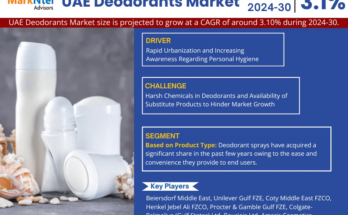Saudi Arabia Facility Management Market has valued at USD 26.28 Billion in 2022 and is anticipated to project robust growth in the forecast period with a CAGR of 8.05% through 2028. The Saudi Arabia Facility Management Market is experiencing significant growth and transformation, driven by various factors that reflect the evolving needs of organizations and the nation’s commitment to modernization. Rapid urbanization and extensive infrastructure development, in line with Saudi Arabia’s Vision 2030 plan, have led to an increased demand for facility management services. Facility managers play a critical role in ensuring the efficient operation and maintenance of buildings and infrastructure, aligning with sustainability goals and enhancing occupant well-being.
The focus on operational efficiency and cost reduction is another driving force, with organizations seeking to optimize their budgets and improve resource utilization. This has spurred the adoption of Integrated Facility Management (IFM) services, allowing clients to consolidate various facility management functions under a single provider and achieve streamlined operations.
Moreover, sustainability and environmental responsibility are prominent drivers, with facility managers implementing green building practices, energy-efficient solutions, and waste reduction programs to align with global environmental goals and reduce operational costs. Technological advancements, particularly in smart building solutions and IoT integration, have revolutionized the industry, enhancing building efficiency, security, and occupant comfort.
The Saudi Arabia Facility Management Market is poised for continued expansion as organizations recognize the strategic value of facility management in achieving their operational and sustainability objectives. Facility management providers are responding to these drivers by offering innovative, technology-driven solutions that cater to the diverse needs of clients in various sectors, from commercial real estate to healthcare and beyond.
Download FREE Sample Report @ https://www.techsciresearch.com/sample-report.aspx?cid=3968
Key Market Drivers
Rapid Urbanization and Infrastructure Development
One of the primary drivers fueling the growth of the Saudi Arabia Facility Management Market is the country’s rapid urbanization and extensive infrastructure development. Saudi Arabia is undergoing a transformative phase with ambitious initiatives such as Vision 2030, which aims to diversify the economy and reduce its dependency on oil. As a result, there is a surge in construction projects, including commercial buildings, residential complexes, hospitals, educational institutions, and industrial facilities.
The increased construction activity has created a substantial demand for facility management services to ensure the effective operation and maintenance of these structures. Facility managers play a vital role in preserving the longevity and functionality of these assets, optimizing energy usage, and providing a safe and comfortable environment for occupants. The growth of smart cities and sustainable infrastructure further amplifies the need for advanced facility management solutions.
Facility management companies are capitalizing on this driver by expanding their service portfolios, adopting technology-driven solutions, and partnering with construction firms to offer integrated facility management services from the initial design phase through the entire lifecycle of buildings.
Focus on Operational Efficiency and Cost Reduction
In an era marked by economic uncertainties and fiscal responsibility, organizations across industries in Saudi Arabia are placing a heightened emphasis on operational efficiency and cost reduction. Facility management services are viewed as instrumental in achieving these objectives.
Facility managers are tasked with optimizing the use of resources, reducing energy consumption, and implementing preventive maintenance strategies to minimize equipment downtime and costly repairs. They leverage technology, such as computerized maintenance management systems (CMMS) and predictive analytics, to proactively identify and address maintenance issues.
By outsourcing facility management functions to specialized providers, organizations can tap into the expertise and experience of professionals who are skilled in streamlining operations while adhering to budget constraints. This focus on cost-effective facility management services is driving the market’s growth, as businesses recognize the potential for substantial cost savings and operational improvements.
Increasing Demand for Integrated Facility Management (IFM)
The demand for Integrated Facility Management (IFM) services is on the rise in Saudi Arabia, and this trend serves as a significant driver for the facility management market. IFM is a comprehensive approach that combines multiple facility management services under a single provider, offering clients a one-stop solution for their diverse facility management needs.
Saudi Arabian organizations, especially those with large and complex facilities, are increasingly seeking IFM solutions to streamline their operations, reduce administrative complexities, and improve service quality. IFM providers manage a wide range of services, including maintenance, cleaning, security, landscaping, and energy management, allowing clients to focus on their core business activities.
The integration of various facility management services promotes efficiency, consistency, and cost savings. It also simplifies communication and coordination among different service providers, leading to improved overall facility management.
To meet the growing demand for IFM services, facility management companies are expanding their service portfolios and enhancing their capabilities to offer integrated solutions that cater to the unique needs of clients in various sectors, such as commercial real estate, healthcare, and hospitality.
Emphasis on Sustainability and Environmental Responsibility
Sustainability and environmental responsibility have become paramount considerations in the Saudi Arabia Facility Management Market. Saudi Arabia is making concerted efforts to reduce its environmental footprint and promote sustainable practices across industries.
Facility managers play a pivotal role in this endeavor by implementing green building practices, energy-efficient solutions, waste reduction programs, and environmentally friendly maintenance strategies. Sustainable facility management practices not only align with global environmental goals but also contribute to significant cost savings by reducing energy consumption and minimizing waste.
The Kingdom’s commitment to green building certifications, such as Leadership in Energy and Environmental Design (LEED) and Estidama, has led to a growing focus on sustainability within the construction and facility management sectors. Facility management providers are actively seeking opportunities to obtain green certifications and help clients achieve their sustainability objectives.
This emphasis on sustainability not only drives demand for sustainable facility management services but also incentivizes facility management companies to invest in eco-friendly technologies and practices, further advancing the market.
Technological Advancements and Smart Building Solutions
The rapid advancement of technology, particularly in the realm of smart building solutions, is a major driver propelling the Saudi Arabia Facility Management Market. Smart building technologies leverage the Internet of Things (IoT), sensors, and automation systems to enhance the operational efficiency and sustainability of buildings.
Facility management companies are integrating smart building solutions to offer clients state-of-the-art facilities that optimize energy usage, provide real-time data analytics, and enhance occupant comfort and safety. These technologies enable remote monitoring and control of building systems, predictive maintenance, and improved security measures.
The demand for smart buildings is on the rise in Saudi Arabia, driven by the government’s initiatives to create smart cities and promote energy efficiency. Facility managers are adopting Building Management Systems (BMS) and Energy Management Systems (EMS) to meet these demands.
Moreover, the COVID-19 pandemic has accelerated the adoption of touchless and remote technologies for building access control, security, and HVAC systems, further driving the integration of technology into facility management operations.
Facility management providers are investing in technology infrastructure, digital platforms, and specialized software to offer advanced facility management services that align with the evolving needs of clients in a technology-driven world. This technological advancement is expected to continue shaping the Saudi Arabia Facility Management Market’s growth trajectory.
Key Market Challenges
Regulatory Compliance and Localization
One of the primary challenges in the Saudi Arabia Facility Management market is navigating the complex regulatory landscape and localization requirements. Saudi Arabia has a stringent regulatory environment, including labor laws, building codes, and safety standards. Facility management providers must ensure that their operations comply with these regulations to avoid legal complications and penalties.
Moreover, Saudi Arabia has implemented localization policies to increase the employment of Saudi nationals in various industries, including facility management. Companies operating in the facility management sector must meet Saudization quotas, which mandate the employment of a certain percentage of Saudi nationals. Meeting these quotas while maintaining a skilled and efficient workforce can be challenging for facility management firms.
To address this challenge, facility management companies often engage in strategic partnerships and collaborations with local businesses and institutions to meet Saudization requirements and ensure compliance with regulations. They also invest in training and development programs to enhance the skills of Saudi nationals entering the workforce.
Talent Acquisition and Retention
Talent acquisition and retention pose significant challenges in the Saudi Arabia Facility Management market. The demand for skilled facility management professionals, including engineers, technicians, and skilled laborers, continues to rise with the growth of the real estate and infrastructure sectors. However, attracting and retaining talent in a competitive job market can be difficult.
The facility management sector often faces competition from other industries, making it essential for companies to offer competitive compensation packages, career advancement opportunities, and training programs to attract and retain skilled professionals. The need for specialized training and certifications further complicates the talent acquisition process.
Additionally, the turnover rate can be relatively high in this sector due to the demanding nature of facility management work. Companies must implement effective employee engagement strategies, invest in continuous professional development, and create a positive workplace culture to address these challenges.
Cost Management and Budget Constraints
Cost management is an ongoing challenge for facility management providers in Saudi Arabia. Organizations, especially in the wake of economic uncertainties, are keen on optimizing their budgets and reducing operational costs. Facility management companies are under constant pressure to deliver high-quality services while minimizing expenses.
This challenge is particularly pronounced in sectors like healthcare, where budget constraints can impact the availability of resources for facility management. Providers must find innovative ways to enhance operational efficiency, adopt preventive maintenance strategies to reduce equipment downtime, and implement energy-efficient solutions to lower utility costs.
Moreover, the rising costs of materials, labor, and technology investments can strain facility management budgets. Providers must carefully manage these costs to maintain profitability while meeting client expectations for service quality.
Related Reports
Abrasive Blasting Nozzle Market [2028]: Analysis & Forecast
Aerial Work Platform Market – Opportunities, Size & Growth [2028]
Compact Electric Construction Equipment Market [2028] – Share, Trends & Forecast
Table of Content-Saudi Arabia Facility Management Market
- Service Overview
1.1. Market Definition
1.2. Scope of the Market
1.2.1.Markets Covered
1.2.2.Years Considered for Study
1.2.3.Key Market Segmentations
1.3. Definitions
- Research Methodology
2.1. Objective of the Study
2.2. Baseline Methodology
2.3. Formulation of the Scope
2.4. Assumptions and Limitations
2.5. Sources of Research
2.5.1.Secondary Research
2.5.2.Primary Research
2.6. Approach for the Market Study
2.6.1.The Bottom-Up Approach
2.6.2.The Top-Down Approach
2.7. Methodology Followed for Calculation of Market Size & Market Shares
2.8. Forecasting Methodology
2.8.1.Data Triangulation & Validation
- Executive Summary
- Impact of COVID-19 on Saudi Arabia Facility Management Market
- Voice of Customer
5.1. Overall Brand Satisfaction Level
5.2. Brand Satisfaction Level wrt Availability
5.3. Brand Satisfaction Level wrt Mode of Distribution
5.4. Brand Satisfaction Level wrt Pricing
5.5. Brand Satisfaction Level wrt Sales Service
- Saudi Arabia Facility Management Market Overview
6.1. Industry Structure and Stakeholders
6.2. Porter’s Five Force Analysis
6.3. Assumptions and Rationale for Saudi Arabia Facility Management Market
6.4. Market Size & Forecast
6.4.1.By Value
6.5. Market Share & Forecast
6.5.1.By Service (Property, Cleaning, Security, Support, Catering & Others)
6.5.2.By Type (Hard Services and Soft Services)
6.5.2.1. By Soft Services (Cleaning Services, Security Services, Catering Services, Health Safety & Waste Management Services, Others)
6.5.2.2. By Hard Services (Mechanical, Electrical and Plumbing, Preventive Maintenance, Structural Maintenance, HVAC and Asset Management, Others)
6.5.3.By Industry (Organized and Unorganized)
6.5.4.By End User (Commercial, Residential, Industrial and Public Sector)
6.5.5.By Sectors (Education, Healthcare, Real Estate, Banking, Hospitality, Housing, Others)
6.5.6.By Mode (In-House, Outsourced)
6.5.6.1. By Outsourced Mode (Single, Bundled, Integrated)
6.5.7.By Region (Makkah, Riyadh, Eastern Province & Rest of Saudi Arabia)
6.6. By Company, By Sectors (2022)
6.7. Saudi Arabia Facility Management Market Map
- Saudi Arabia Property Facility Management Market Overview
7.1. Market Size & Forecast
7.1.1.By Value
7.2. Market Share & Forecast
7.2.1.By Type
7.2.2.By Industry
7.2.3.By End User
7.2.4.By Mode
7.2.4.1. By Outsourced Mode
7.2.5.By Region
7.2.6.By Company (2022)
- Saudi Arabia Cleaning Facility Management Market Overview
8.1. Market Size & Forecast
8.1.1.By Value
8.2. Market Share & Forecast
8.2.1.By Type
8.2.2.By Industry
8.2.3.By End User
8.2.4.By Mode
8.2.4.1. By Outsourced Mode
8.2.5.By Region
8.2.6.By Company (2022)
- Saudi Arabia Security Facility Management Market Overview
9.1. Market Size & Forecast
9.1.1.By Value
9.2. Market Share & Forecast
9.2.1.By Type
9.2.2.By Industry
9.2.3.By End User
9.2.4.By Mode
9.2.4.1. By Outsourced Mode
9.2.5.By Region
9.2.6.By Company (2022)
- Saudi Arabia Support Facility Management Market Overview
10.1. Market Size & Forecast
10.1.1. By Value
10.2. Market Share & Forecast
10.2.1. By Type
10.2.2. By Industry
10.2.3. By End User
10.2.4. By Mode
10.2.4.1. By Outsourced Mode
10.2.5. By Region
10.2.6. By Company (2022)
- Saudi Arabia Catering Facility Management Market Overview
11.1. Market Size & Forecast
11.1.1. By Value
11.2. Market Share & Forecast
11.2.1. By Type
11.2.2. By Industry
11.2.3. By End User
11.2.4. By Mode
11.2.4.1. By Outsourced Mode
11.2.5. By Region
11.2.6. By Company (2022)
- Riyadh Facility Management Market Overview
12.1. Market Size & Forecast
12.1.1. By Value
12.2. Market Share & Forecast
12.2.1. By Service
12.2.2. By Type
12.2.2.1. By Soft Services
12.2.2.2. By Hard Services
12.2.3. By Industry
12.2.4. By End User
12.2.5. By Sectors
12.2.6. By Mode
12.2.6.1. By Outsourced Mode
12.2.7. By Region
- Makkah Facility Management Market Overview
13.1. Market Size & Forecast
13.1.1. By Value
13.2. Market Share & Forecast
13.2.1. By Service
13.2.2. By Type
13.2.2.1. By Soft Services
13.2.2.2. By Hard Services
13.2.3. By Industry
13.2.4. By End User
13.2.5. By Sectors
13.2.6. By Mode
13.2.6.1. By Outsourced Mode
13.2.7. By Region
- Contracting and Pricing Mechanism
14.1. Types of Agreements Adopted with End-Users
14.2. Types of Agreements Adopted with Outsourced Suppliers
- Price Point Analysis (Cost of Spending in Saudi Arabia)
15.1. Plumbing
15.2. Painting
15.3. AC Service
15.4. Electrical Service
15.5. Pest Control
15.6. Masonry Service
- Market Dynamics
16.1. Drivers
16.1.1. Sector Specific Drivers (Healthcare, Hospitality, Housing, Real Estate, Education, Banking, Industrial, Tourism)
16.2. Challenges
- Market Trends and Developments
17.1. Key Technologies Adopted
17.2. Recent Developments
- Policy and Regulatory Landscape
18.1. Historical Evolution of Regulation
18.2. Current Guidelines
18.3. Licensing / Certification Requirements




